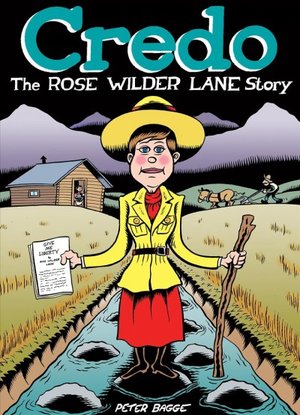 After addressing the most urgent need in the first round, drafting North Carolina State centre Garrett Bradbury with the eighteenth pick, the Minnesota Vikings entered day two of the 2019 draft with the following seven picks in hand:
After addressing the most urgent need in the first round, drafting North Carolina State centre Garrett Bradbury with the eighteenth pick, the Minnesota Vikings entered day two of the 2019 draft with the following seven picks in hand:
- Second-round pick (18th/50th overall)
- Third-round pick (17th/81st overall)
- Fourth-round pick (18th/120th overall)
- Sixth-round pick (17th/190th overall)
- Sixth-round pick (36th/209th overall, compensatory for the loss of Teddy Bridgewater)
- Seventh-round pick (33rd/247th overall, compensatory for the “loss” of Tramaine Brock)
- Seventh-round pick (36th/250th overall, compensatory for the loss of Shamar Stephen, but who ironically rejoined the team this off-season)
Again, just to unsettle long-time Spielman watchers, the Vikings actually used their second round pick instead of trading down for more picks later in the draft. At the number 50 slot, they selected Alabama tight end Irv Smith, Jr., and suddenly Kyle Rudolph’s name is being discussed freely as potential trade-bait.

247 Sports said this about Smith:
Smith may never be an elite tight end at the next level, but he is a safe bet to be a consistent and reliable one. He is athletic enough to be a good chess piece in an offense and is rock solid as both a blocker and a pass catcher. He does not have a ton of playing experience, but remember that he is coming from a pro prospect factory at Alabama. His ceiling is not quite as high as the T.J. Hockenson or Noah Fant type players of this draft, but there is next to little risk in grabbing him to add to a football team. It was a bit of a shock when he was still on the board after the first five to ten picks of the second round and easily could have gone much higher, but the Vikings now have their No. 2 athletic tight end to Kyle Rudolph and probable successor to him at the position.
Matthew Coller says the Vikings landed their “mismatch tight end” with this pick:
The Minnesota Vikings have been taking swings at tight ends for years but haven’t invested a high draft pick until Friday night when they grabbed Alabama’s Irv Smith with the 50th overall pick.
While the Vikings have sent Kyle Rudolph to the Pro Bowl twice, they have not had tight end that could challenge opponents down field since Steve Jordan. With the Smith selection, they hope to have found a unique weapon.
“We believe Irv is a perfect fit for our new scheme offensively, what they want to do in terms of a mismatch guy, he’s an F tight end who we can move around,” director of college scouting Jamaal Stephenson said. “We can line him up wide, we can line him up tight, we can use him in the backfield, so he has a lot of versatility.”
With the Crimson Tide last season he caught 44 passes on just 57 targets (16.1 yards per catch) for 707 yards and scored eight touchdowns. According to Pro Football Focus, he rated No. 1 in yards per route run and caught the fifth most passes that traveled over 20 yards in the air of any tight end in the draft class.
Smith’s athletic traits match up with his big play statistics. At the NFL Combine he ran a 4.63 40-yard dash.
However, the draft war room staff could only keep Rick Spielman from trading for so long — maybe he chewed through the restraints, I dunno — the Detroit Lions somehow got through to Spielman to acquire the Vikings’ third round pick at #81 in exchange for the 88th and 204th picks. Then, proving that they couldn’t get him strapped down again in time, he executed another trade with the Seattle Seahawks, swapping that 88th pick for the 92nd pick and the 159th pick. And then a third trade with the New York Jets to move back to the 93rd pick and also add the 217th pick. AND THEN yet another trade to swap the 93rd pick to Baltimore for the 102nd, 191st, and 193rd picks.
After all that frenzied trading, the Vikings finally did make a third-round pick — the last of day two — Boise State running back Alexander Mattison.

As we get deeper into the draft, the readily available information on players will naturally get more brief. Here’s the initial post from Zone Coverage on Mattison:
Mattison, at 5-foot-11, 221 pounds, rushed for 1,000 yards each of the last two seasons, though his career average was just 4.9 yards per carry — a nice average in the pro game but less impressive in college.
He made 55 catches over the past two years and was used sparingly last season as a kick returner. He didn’t drop a pass in 2018, per Pro Football Focus.
The former Broncos ball carrier ran the fourth-slowest 40-yard dash time at the combine, 4.67 seconds. He tied for the sixth-best 20-yard shuttle, however, and was fourth in the broad jump at his position.
With all the flurry of trades, after entering the day with seven, they’ll have nine draft picks on day three (but I really don’t expect them to select nine players … some of this vast hoard will be swapped for other picks … probably):
- Fourth-round pick (18th/120th overall)
- Fifth-round pick (21st/159th overall, from Seattle)
- Sixth-round pick (17th/190th overall)
- Sixth-round pick (18th/191st overall, from Baltimore)
- Sixth-round pick (20th/193rd overall, from Baltimore)
- Sixth-round pick (31st/204th overall, from Detroit)
- Seventh-round pick (3rd/217th overall, from New York Jets)
- Seventh-round pick (33rd/247th overall, compensatory for “loss” of Tramaine Brock)
- Seventh-round pick (36th/250th overall, compensatory for loss of Shamar Stephen)

 After addressing the most urgent need in the first round, drafting North Carolina State centre Garrett Bradbury with the eighteenth pick, the Minnesota Vikings entered day two of the 2019 draft with the following seven picks in hand:
After addressing the most urgent need in the first round, drafting North Carolina State centre Garrett Bradbury with the eighteenth pick, the Minnesota Vikings entered day two of the 2019 draft with the following seven picks in hand:






